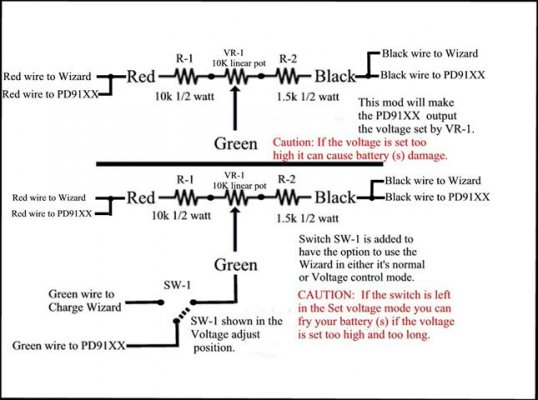DonTom
Well-known member
The paperwork for the Charge Wizard, first line, first page reads:
"OPERATION
*The Charge Wizard automatically selects the optimum battery charging mode--depending on your battery charge".
I started with my new 12 volt house battery in the "Storage mode" this morning because it is very charged full, from hours of driving plus being at this RV Park overnight. Very, very slow flash as expected.
But I had to disconnect the 120 VAC from this RV park this morning to move this RV to a different slot where I can stay for a few days. It took no more than two minutes from the time I unplugged to the time my 120 VAC was plugged in again, just a few feet away.
The Charge Wizard then said I was in the "Boost Mode". Green light on solid. It stayed in this mode for around two hours before going to the "fully charged" mode (the fast flash of the green light). Now, more than ten hours later, it is still in the "fully charged" mode, never went back to the storage mode. But I assume it will by morning.
I always wondered how the converter knew the state of charge as it is supplying a charge.
But the evidence is clearly showing it's simply timers and has no idea about your real charge. Anybody here know how the thing really works?
This is not a problem, at least I don't think so. I am just curious how it really works.
-Don- Barstow, CA
"OPERATION
*The Charge Wizard automatically selects the optimum battery charging mode--depending on your battery charge".
I started with my new 12 volt house battery in the "Storage mode" this morning because it is very charged full, from hours of driving plus being at this RV Park overnight. Very, very slow flash as expected.
But I had to disconnect the 120 VAC from this RV park this morning to move this RV to a different slot where I can stay for a few days. It took no more than two minutes from the time I unplugged to the time my 120 VAC was plugged in again, just a few feet away.
The Charge Wizard then said I was in the "Boost Mode". Green light on solid. It stayed in this mode for around two hours before going to the "fully charged" mode (the fast flash of the green light). Now, more than ten hours later, it is still in the "fully charged" mode, never went back to the storage mode. But I assume it will by morning.
I always wondered how the converter knew the state of charge as it is supplying a charge.
But the evidence is clearly showing it's simply timers and has no idea about your real charge. Anybody here know how the thing really works?
This is not a problem, at least I don't think so. I am just curious how it really works.
-Don- Barstow, CA

